Living Proof: Ingenious and sustainable land use practices of Aboriginal people
Friday 23 February, 2024
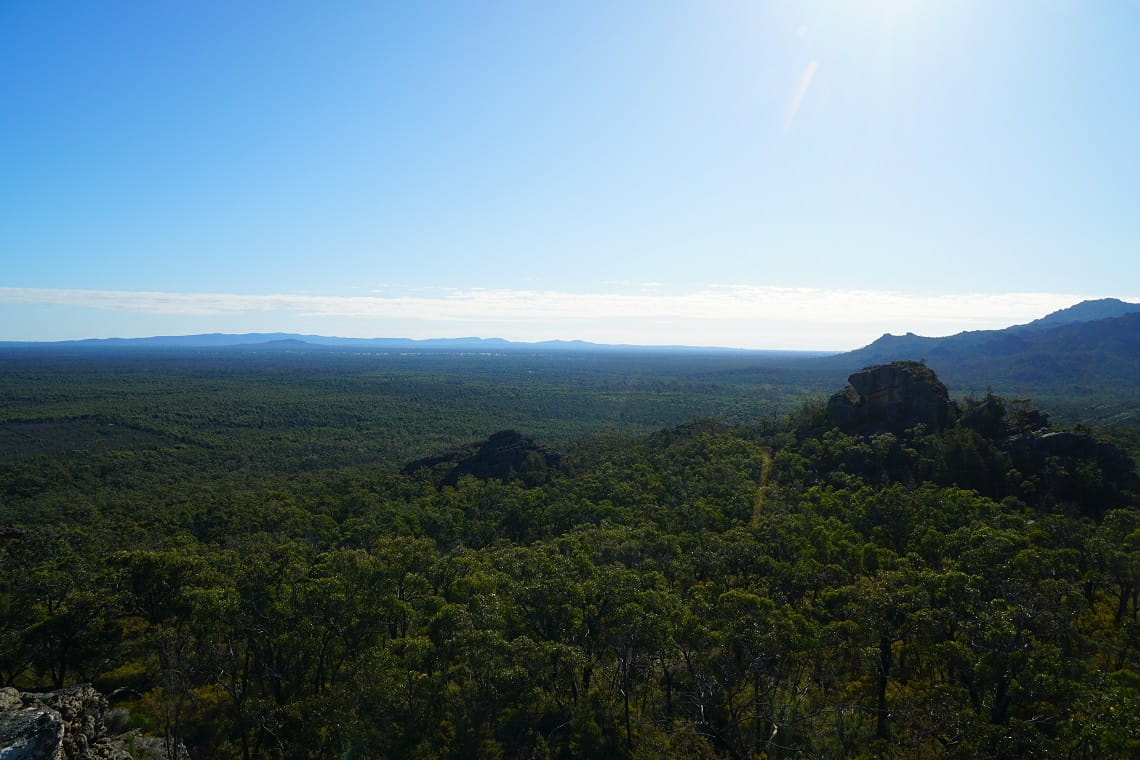 Grampians National Park is part of the Aboriginal bio-cultural landscape known as Gariwerd. The park is heritage listed for it's outstanding national significance for Indigenous rock art places, its richness of flowers and birdlife and its rugged beauty. Gariwerd is on the lands of the Djab Wurrung, Jadawadjali and Gunditjmara peoples.
Grampians National Park is part of the Aboriginal bio-cultural landscape known as Gariwerd. The park is heritage listed for it's outstanding national significance for Indigenous rock art places, its richness of flowers and birdlife and its rugged beauty. Gariwerd is on the lands of the Djab Wurrung, Jadawadjali and Gunditjmara peoples.
Sione Ikafanga is the Cultural Landscapes Advisor for Managing Country Together at Parks Victoria. When speaking about cultural heritage, Sione goes to the core of what it is, and what cultural heritage protection means to him.
"Some people may think when we're referring to cultural heritage protection, it's an artefact or a scar tree or middens. Well, it's all of that and so much more. It's native trees, plants, wildlife, water, fire, all these landscapes across Australia are cultural places and I have been blessed that I have a voice given to me from my Elders past and present, and to help protect and preserve our cultural values," says Sione."Long before 1788 there were land managers, the best of land managers and I want to preserve what we've got left.
What is Cultural Heritage?
Cultural heritage is the legacy of Victoria’s Aboriginal societies. It can include the physical evidence of past and present occupation and cultural practices, visible through places and objects like shell middens, rock markings, artefacts, and culturally modified trees.
Cultural heritage is also reflected in the intangible cultural values passed from generation to generation – the practices, expressions, knowledge, and skills developed and refined over thousands of years that connect Aboriginal people to one another, their Ancestors and Country.
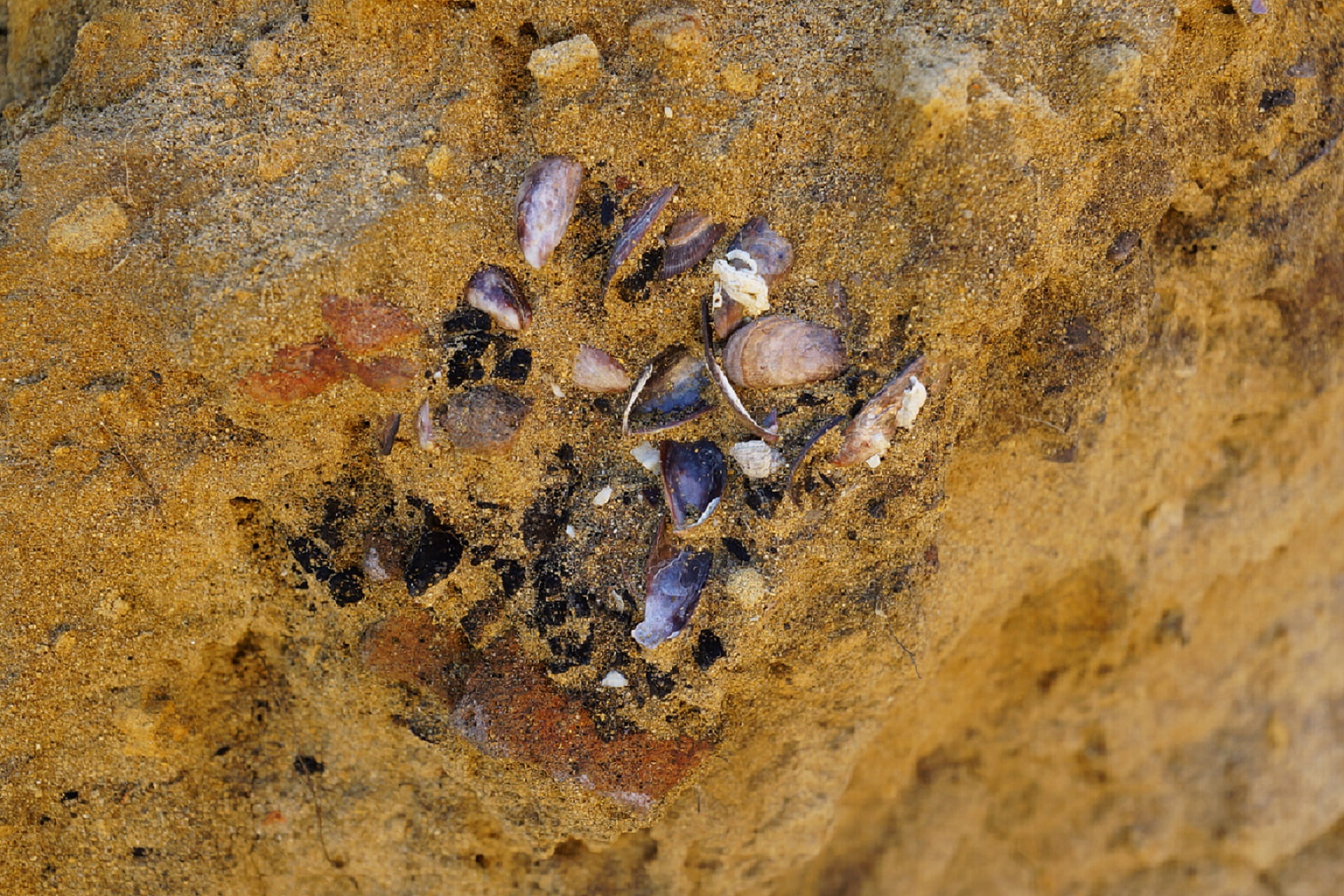
Middens are shell deposits that have built up over time, often as the result of Aboriginal people gathering and eating shellfish and molluscs - Credit Parks Victoria
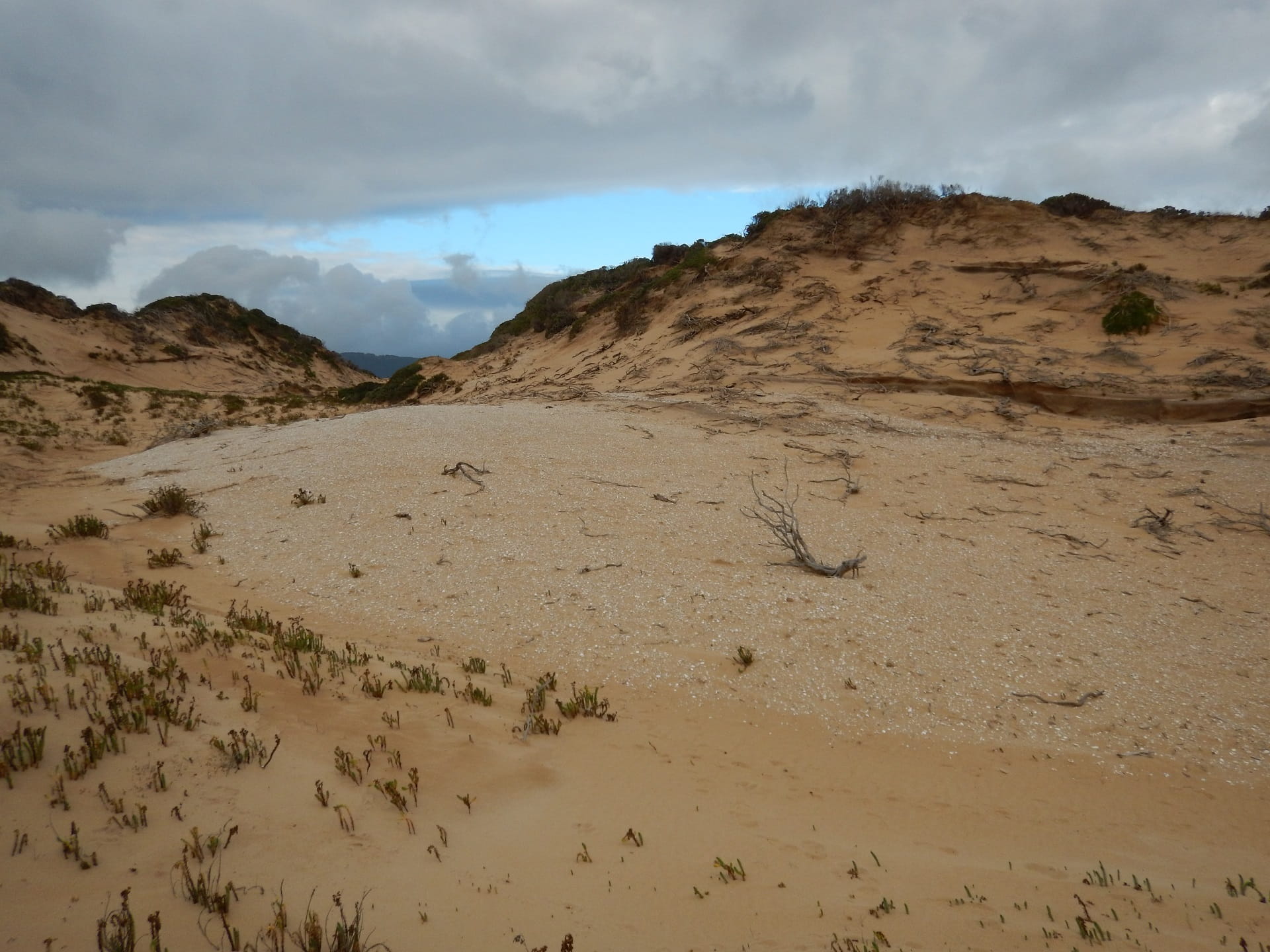
A large midden in an exposed coastal dune - Credit Parks Victoria
Imagine your family, your Ancestors coming together in the same place for thousands of generations, gathering and eating shellfish and molluscs around a cooking fire. The discarded shells from this seafood like mussels, limpets and turban are piled high.
These shell deposits are called middens and they are just one material example of how First Nations’ peoples lived and managed their Country sustainably for more than 60,000 years.
Aboriginal cultural landscapes are at the core of Victoria’s network of parks and reserves and these landscapes have been modified over many thousands of years of occupation.
The landscapes we see today are influenced by the skills, knowledge, and activities of the Aboriginal land managers, the first land managers.Stone arrangements are rare and extremely significant Aboriginal cultural heritage places
Evidence of the ingenuity of the First Peoples and the way they managed this vast continent since time immemorial can be found in parks throughout Victoria.
The Budj Bim Cultural Landscape, in the heart of Gunditjmara Country in south-western Victoria has one of the world’s most extensive and oldest aquaculture systems.
At least 6,600 years ago Gunditjmara people first constructed these extensive, sophisticated aquaculture systems along the Budj Bim lava flow, and many of these systems are still in use today.
The date of the Budj Bim fish traps and channel systems make this sustainable engineering feat at least 2,500 years older than the great Khufu pyramid in Giza, Egypt and at least 2,000 years older than Stone Henge.
The Gunditjmara people engineered the effective system to trap, store and harvest kooyang - short-finned eel. Weirs, holding and growing ponds, and stone channels, some of which are hundreds of metres long, were dug out of basalt lava flow from the now dormant Budj Bim volcano.
The Budj Bim Cultural Landscape is a unique, world heritage listed place that shows how Gunditjmara people worked with the natural resources and environment of the south west region of Victoria to establish a permanent place of human society over the past 30,000 years and beyond.
The Budj Bim Cultural Landscape consists of three locations; Tae Rak (Lake Condah), Kurtonitj and the Tyrendarra, which are declared Indigenous Protected Areas (IPAs).
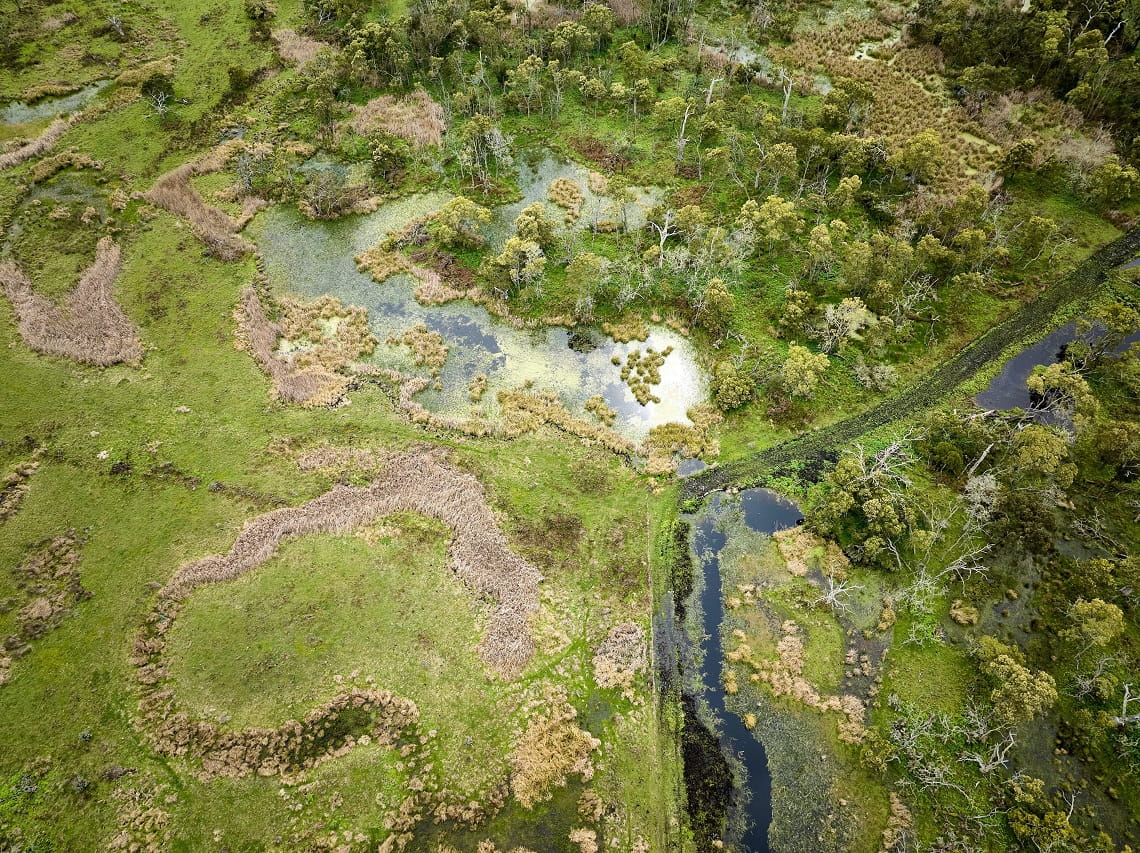
Budj Bim Cultural Landscape
The Budj Bim Cultural Landscape is a unique place with universal heritage values that demonstrate how Gunditjmara people worked with the natural resources and environment of the Victorian south west region to establish a permanent place of human society over the past 30,000 years and beyond.
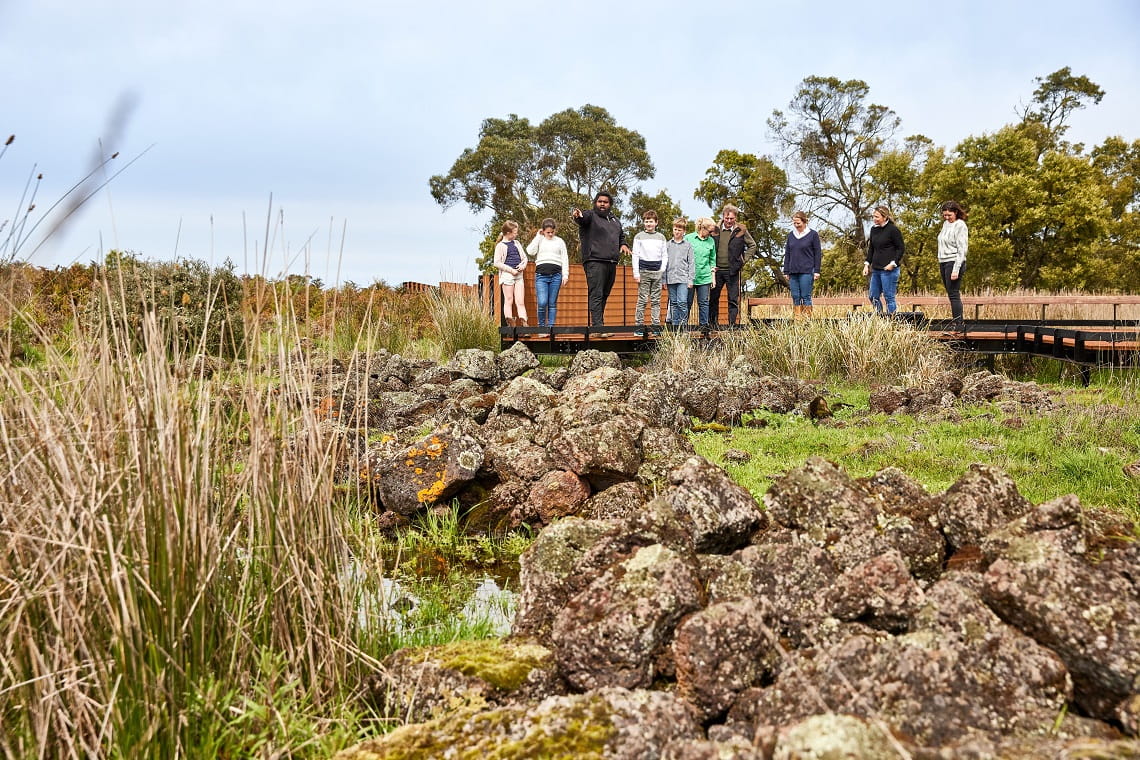
Budj Bim
The Budj Bim Cultural Landscape is located within Gunditjmara Country in south-eastern Australia, and comprises of three components; Budj Bim - Northern Component, Kurtonitj - Central Component and Tyrendarra Southern Component. Each component contains extensive evidence of the Gunditjmara’s aquaculture system.
Rockwells
The sustainable land management practices of Aboriginal people can be found even in the most intensively developed regions. In many cases the imprint of thousands of generations of Aboriginal land use, engineering and design is so harmonious it can be mistaken for natural formations.
Rockwells are a way of sustainably collecting water. They can naturally form in rocks and were further modified by Aboriginal people to expand the holes to collect and store water.
Up on Big Rock, in Wurdi Youang, the You Yangs Regional Park there are no nearby fresh water sources, so the Wadawurrung people collected and stored drinking water by chiseling out rock wells to collect rainwater.
The largest rock well at Big Rock is usually filled with water all year round, and there was once a rock that was placed over the well to keep the drinking water fresh and protect it from nearby animals.
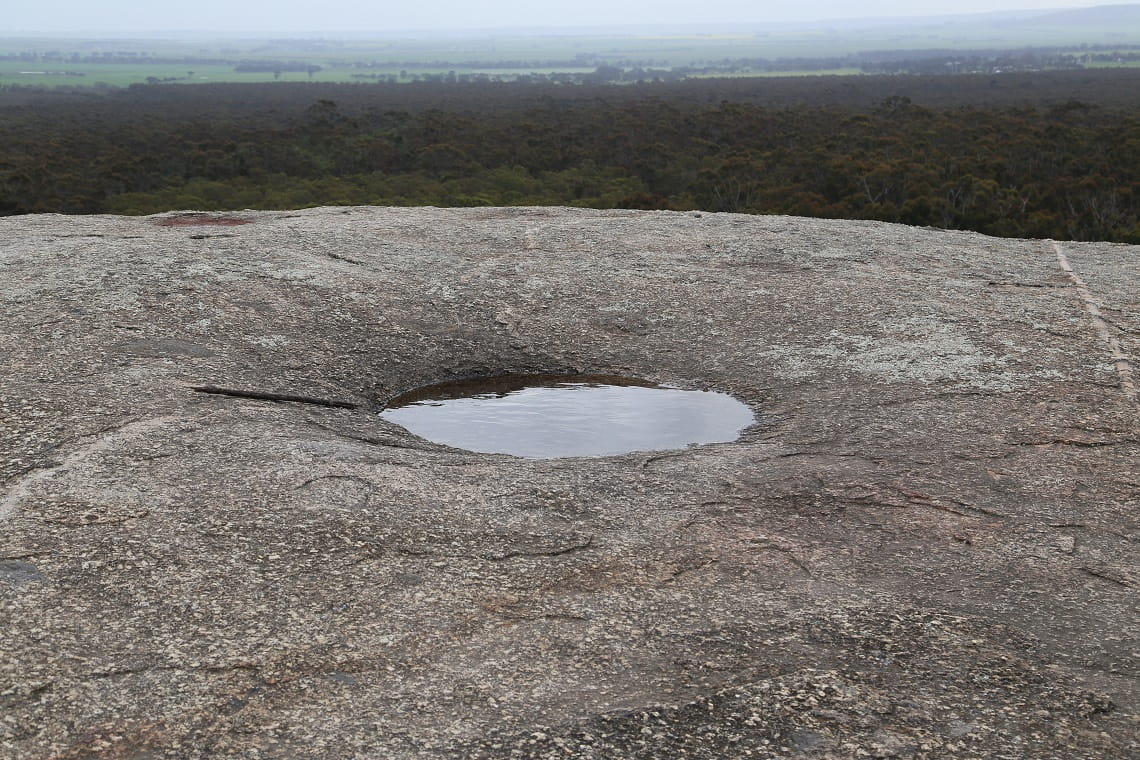
Rockwell
Rockwell, You Yangs Regional Park, Wadawurrung Country
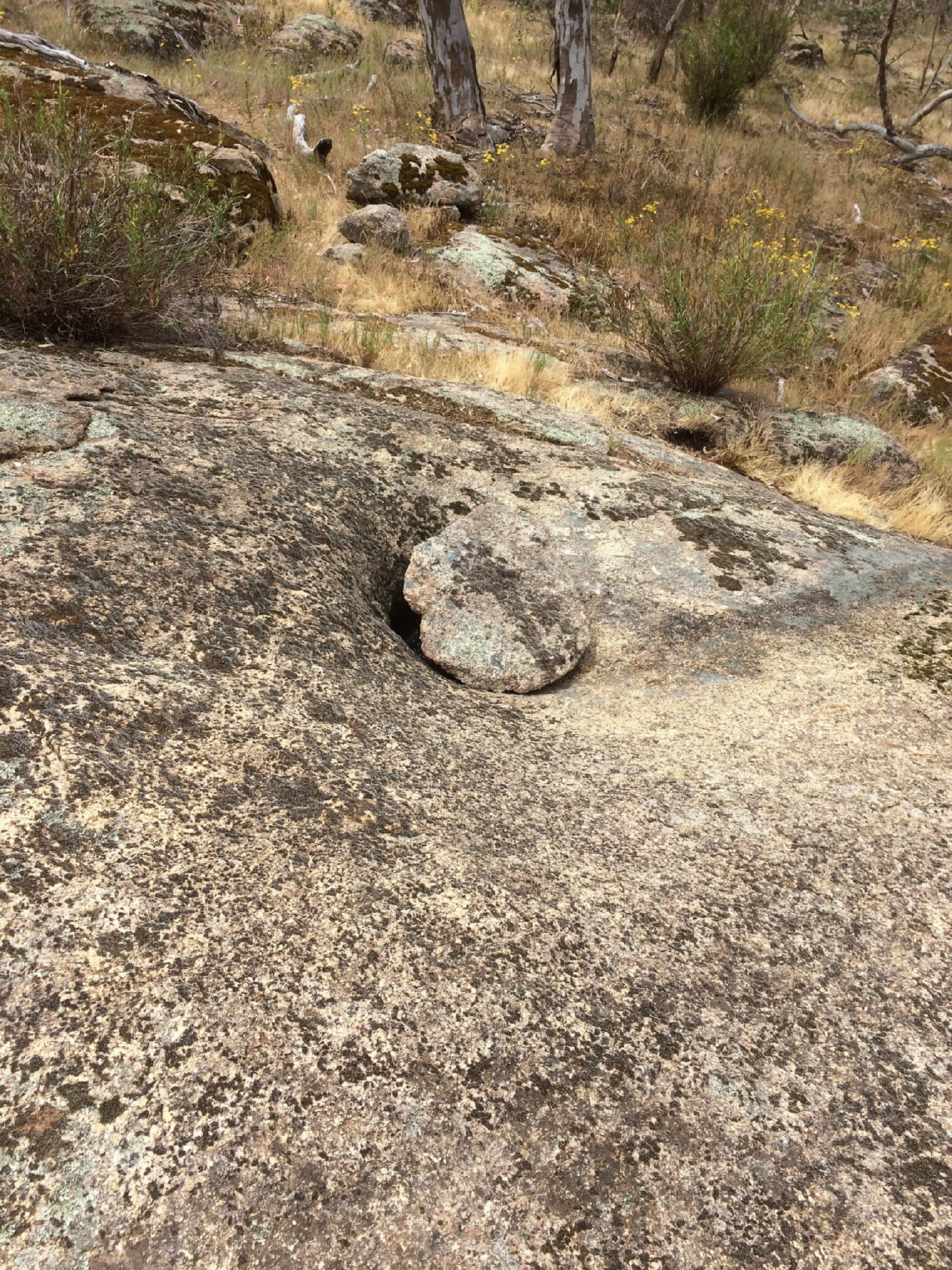
Rockwell with lid.
Quarries - a source of stone to manufacture tools
Aboriginal people quarried different types of stone, each with its own special value and use. Stone tools were made from greenstone, silcrete, quartz, quartzite, basalt and chert. Pigments were made from quarried ochre, and grinding tools were made from sandstone.
Quarries can be small, consisting of a boulder that has had stone flakes removed from it, leaving behind ‘scars’ on the rock surface.
Other quarries cover large areas with rocky outcrops and remnants of unfinished tools and stone flakes, that were bi-products of the mining process.
Mount William stone quarry in Wurundjeri Country has been the source of Greenstone axes traded as far away as Northern Territory. The National Heritage Listed Place has been utilised as a quarry for at least 1,500 years, right up until about the 1840’s.
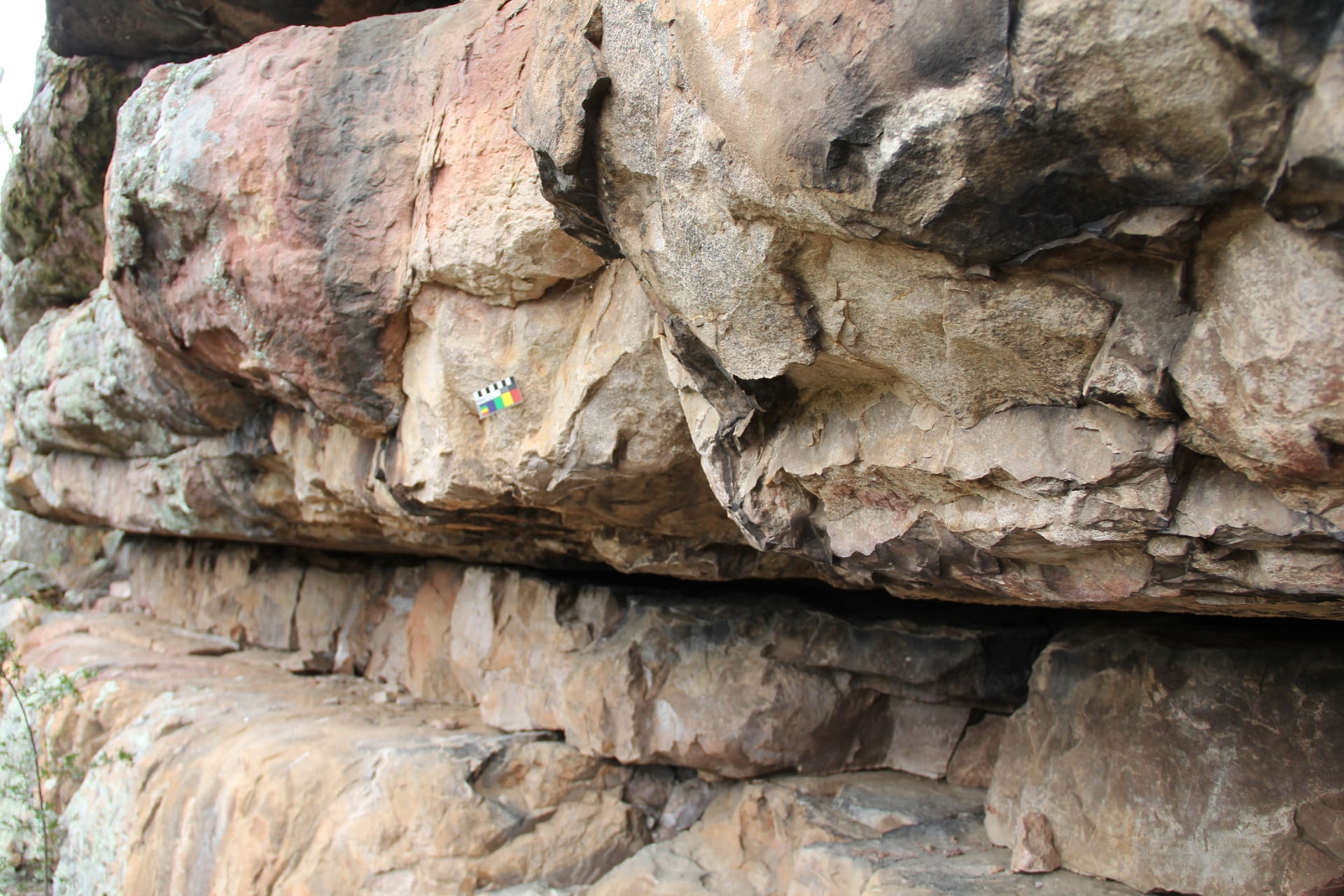
Quarry
Scars on a rocky outcrop where stone has been quarried.
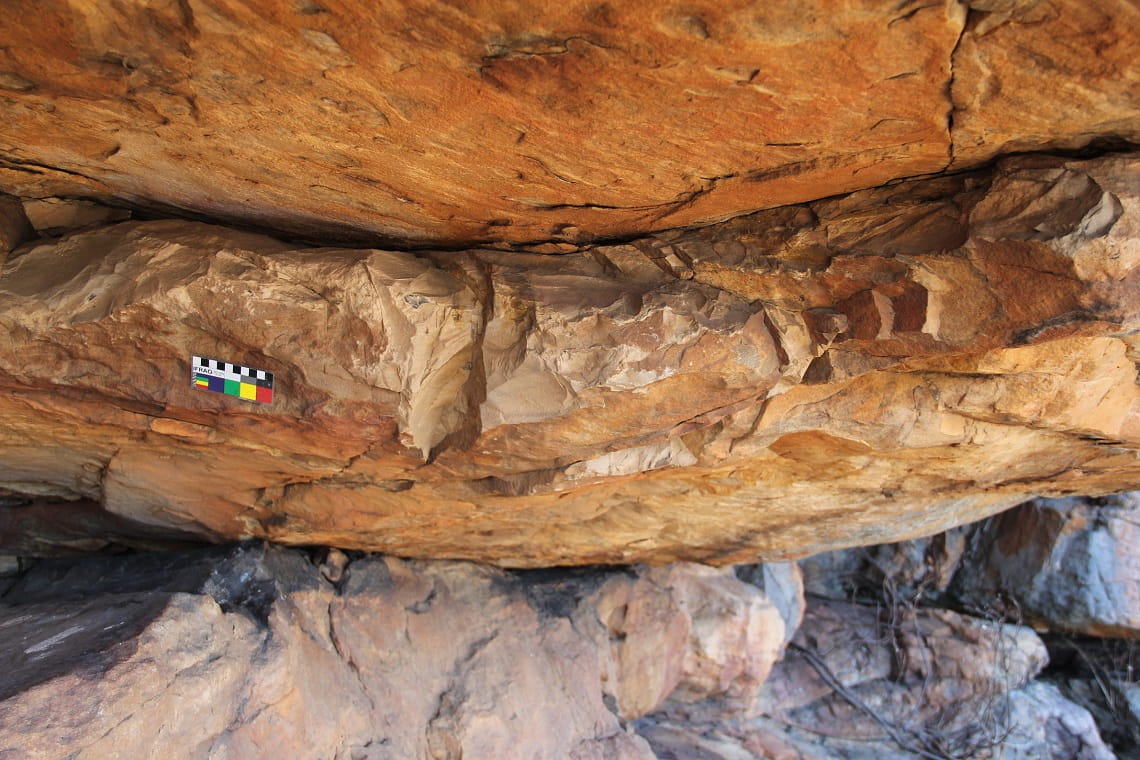
Quarry
Scars on a rock shelter where stone has been quarried.
Flaked stone tools
Flaked stone tools are found everywhere across Victoria and were made in many forms from many types of stone.
These tools were used for everything that tools and knives are used for today, including cutting plants, food and meat, scraping of bark or animal skins, engraving, chopping, carving and chiselling.
Flaked stone tools are created by striking a ‘hammer’ stone on a suitable stone nodule to chip or flake-off a piece. This piece was then usually shaped by finer flaking, known as ‘pressure flaking’, into tools such as scrapers, blades or spear points.
Traditional methods of tool production were used by Aboriginal people with newly introduced raw materials, like glass, after the arrival of Europeans.
The thick bases of bottles were flaked and worked into tools, which have been found in many parts of Victoria and across Australia. Metal items like horseshoes were heated and reworked to form spear points and knives. In many parts of Australia, Aboriginal people still make and use stone tools for use in everyday activities.
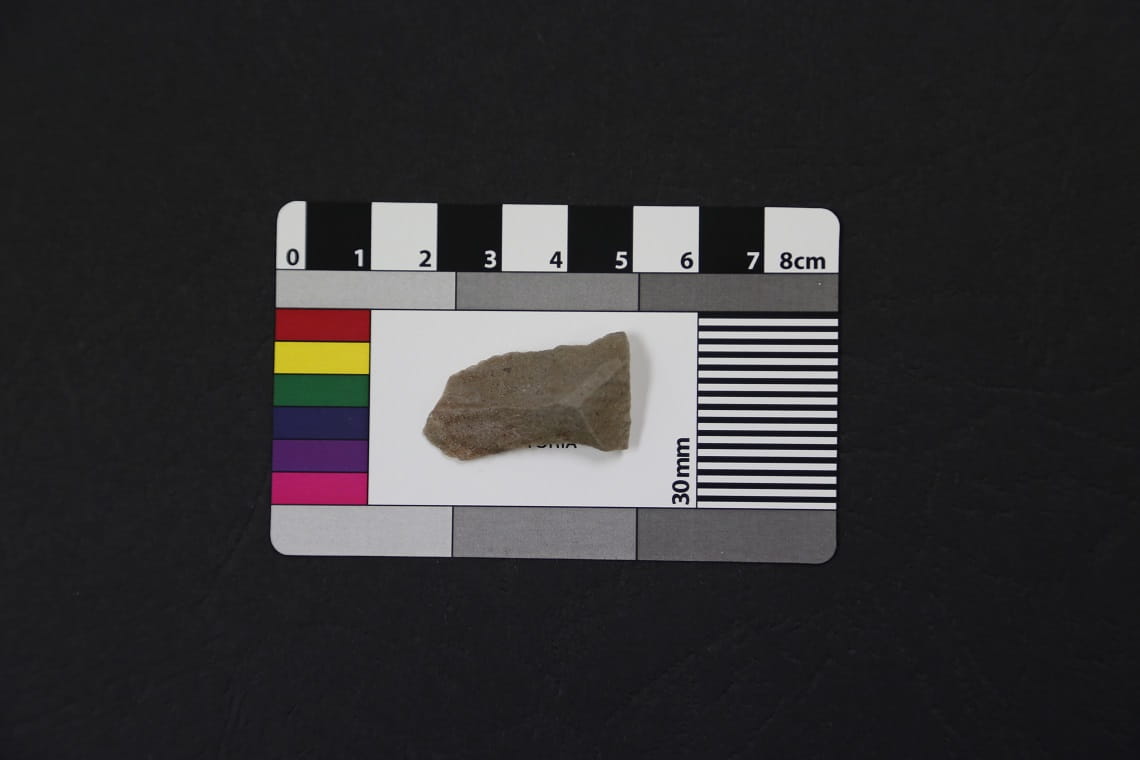
Stone tools
Flake dorsal surface showing negative scars.
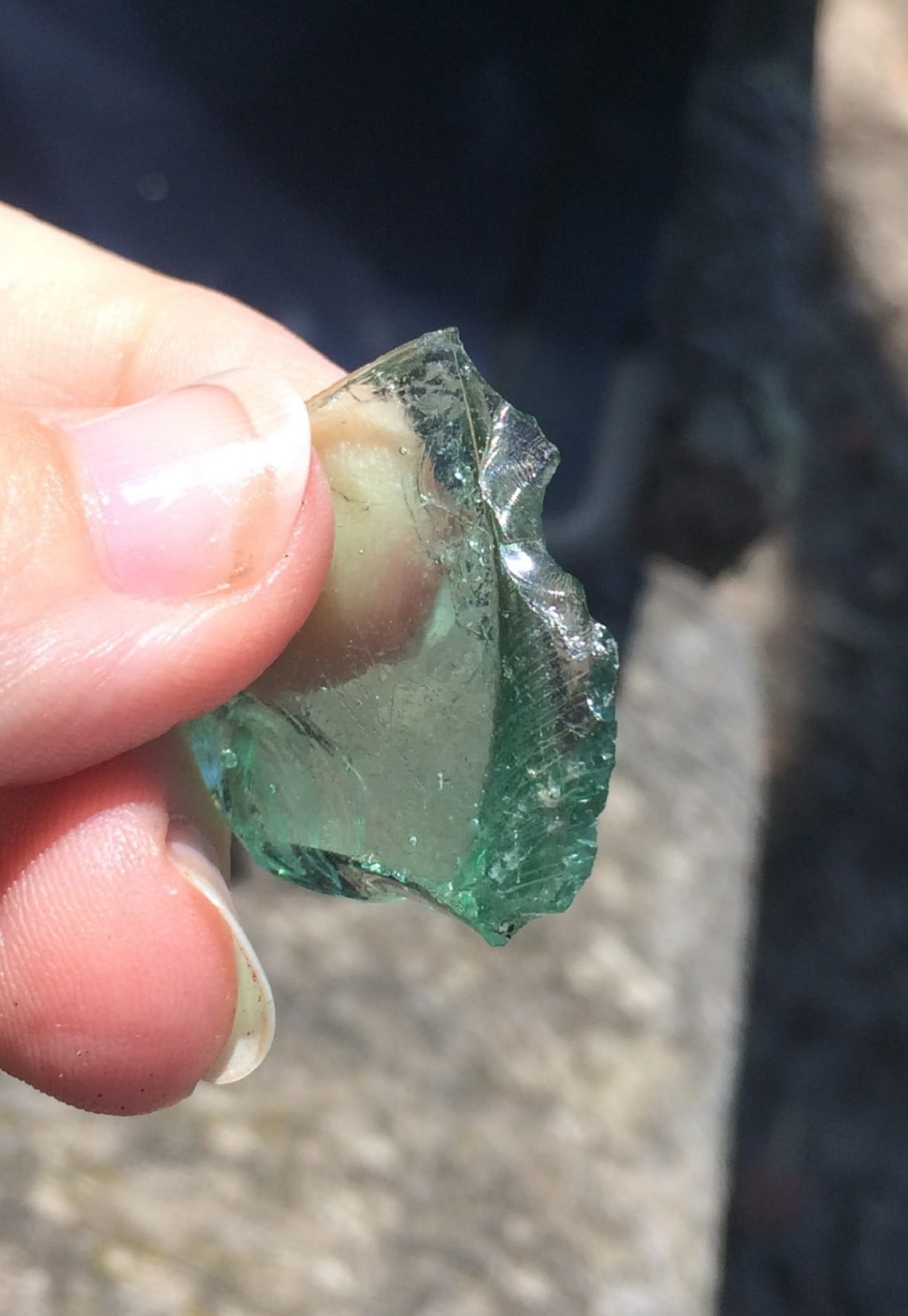
Glass artefact
Traditional methods of tool production were used by Aboriginal people with newly introduced raw materials, like glass, after the arrival of Europeans.
Axe-grinding Grooves
Axe-grinding grooves are almost always found along the edges of rivers, creeks, lakes, and swamps, or near dry or drained water bodies.
They are created when Aboriginal people shape and sharpen stone axes along a cutting edge by grinding them against course stone platforms or outcrops, often sandstone. This is a process which wears away at the stone, creating elongated indentations.
Creating and refining the shape of a sharp cutting edge on a roughly shaped piece of stone can take many hours of work by skilled stone craftspeople.
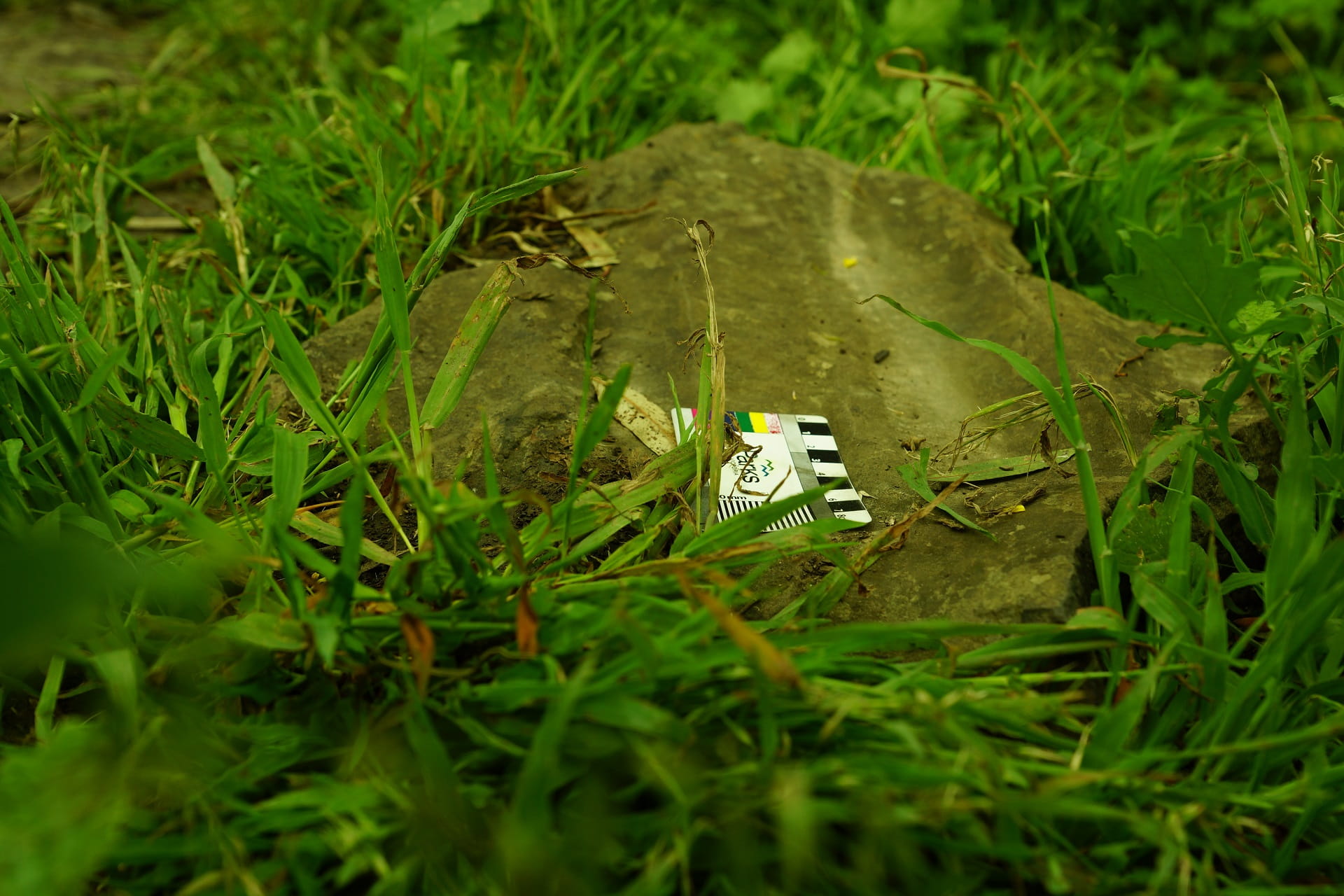
Axe-grinding groove
Ground Edge Axes
The oldest known ground-edge stone axe in the world was re-discovered by archaeologists in 2014 at Carpenter’s Gap in the Kimberley, the northern most region of Western Australia. Dated at 44-49,000 years old, it is estimated to be 10,000 years older than the previous oldest axe of its type, also found in Australia.
The cutting edges of stone axe-heads were shaped and sharpened with great skill through grinding on other abrasive stone, such as sandstone.
Ground-edge axes were highly valued, widely traded and have great cultural and spiritual significance. The stone quarries from which the stone for axes was mined are places of spiritual significance, adding to the cultural value and importance of the axe.
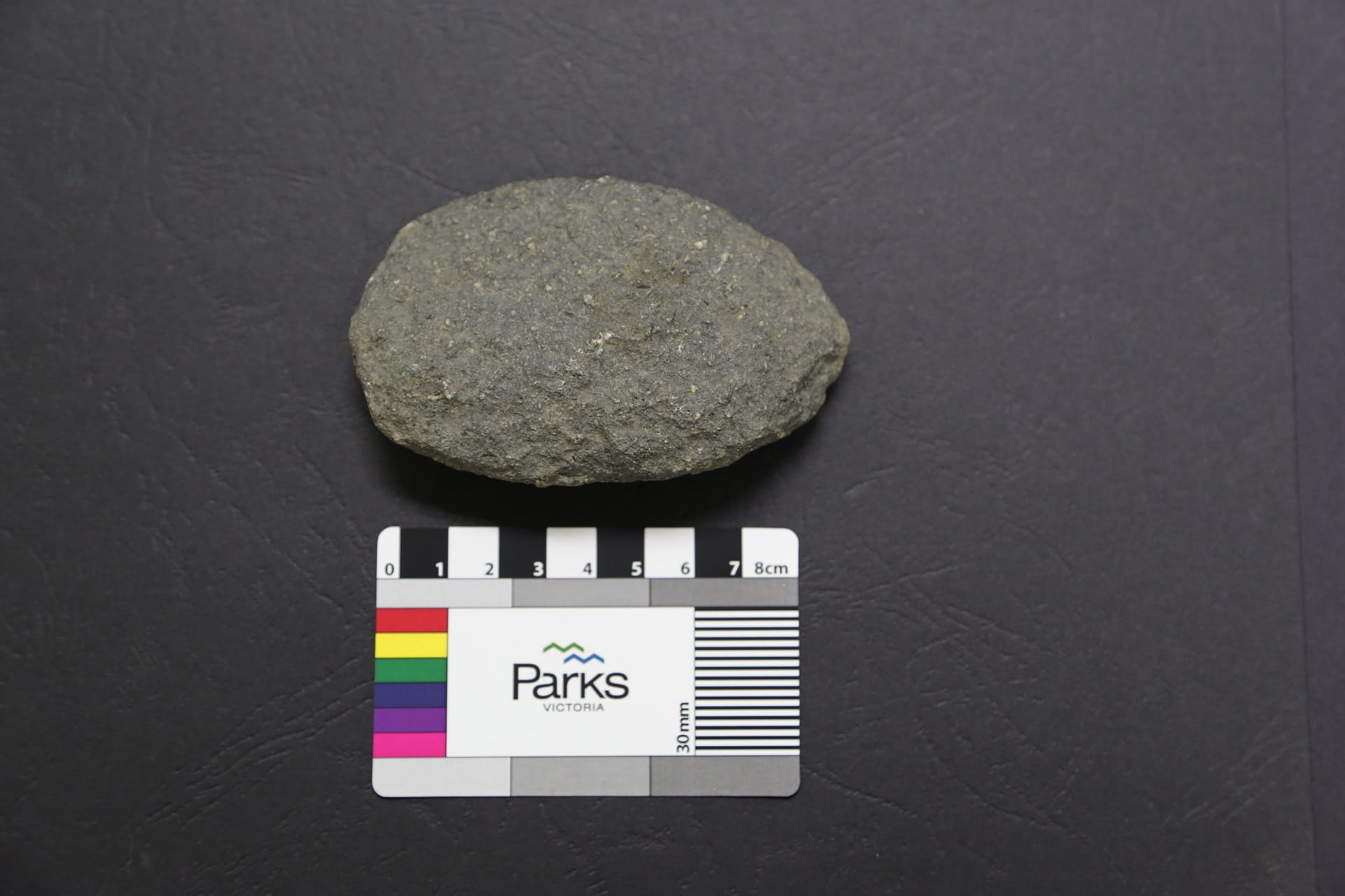
Aboriginal people made Axe blanks by striking large flakes of stone from rocky outcrops, and then shaping them.
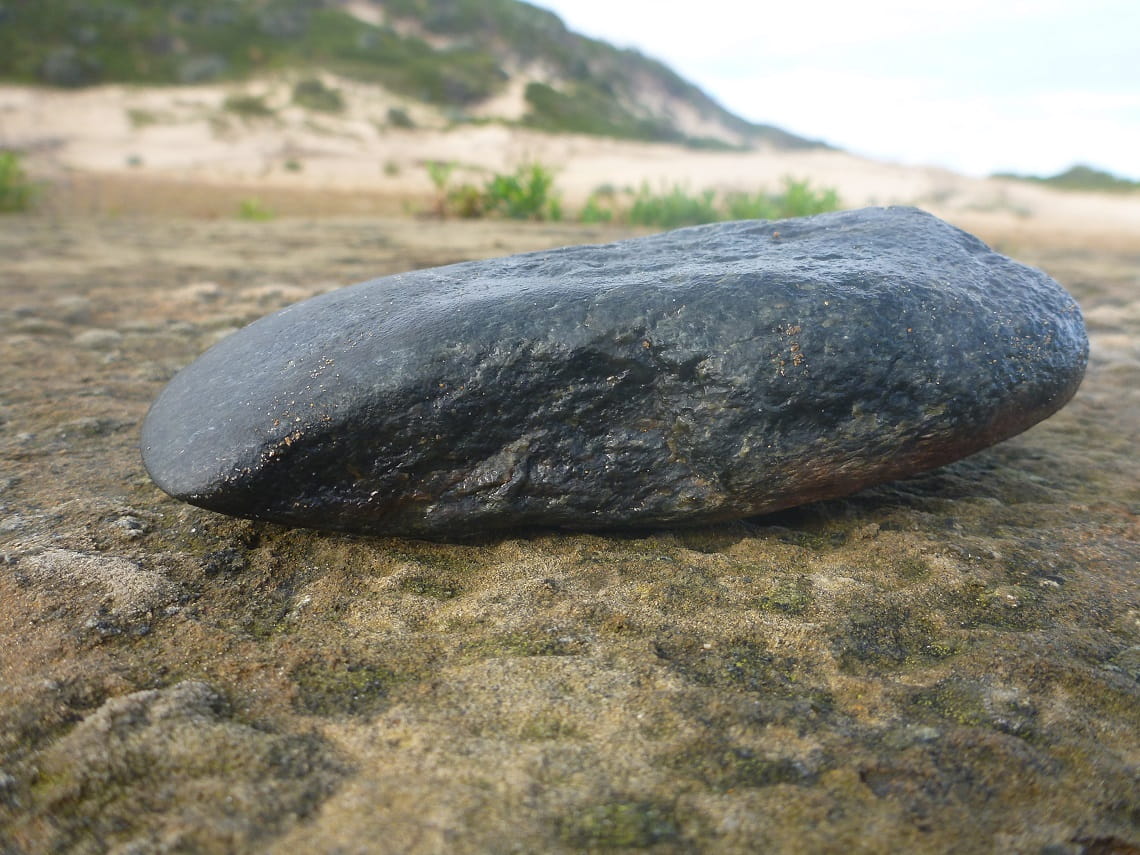
Ground edge axes were highly valued, and were shaped and sharpened with great skill.
What to do if you find something
All Aboriginal cultural heritage is protected under the Aboriginal Heritage Act 2006 (Vic.) (the Act). If you come across any Aboriginal cultural heritage, Section 24 of the Act requires that the discovery of Aboriginal cultural heritage places or objects be reported to the First Peoples – State Relations as soon as practicable. It is an offence under Section 27 of the Act, to harm Aboriginal cultural heritage and under Section 28 to do an act that harms or is likely to harm Aboriginal cultural heritage.
Aboriginal Cultural Heritage Plan, Girtgan Kurtba Ngulmbiu Gway-un: All Take First Step
Girtgan Kurtba Ngulmbiu Gway-un, is the Gunaikurnai language name for Parks Victoria’s Aboriginal Cultural Heritage Plan. It means All Take First Step.
The plan outlines Parks Victoria’s responsibility and opportunity to work closely with Traditional Owners to protect, conserve and improve the management of cultural values across the state.
The report also acknowledges while we have systems and processes to support effective management of cultural values, we have more work to do to fully embed best practice cultural heritage management into our land management approaches.
In our rapidly changing land management context, where cultural authority and responsibility to look after cultural heritage are Traditional Owner rights recognised by law, we have an opportunity to redefine how we work in partnership with Traditional Owners to better manage Victoria’s cultural landscapes.

